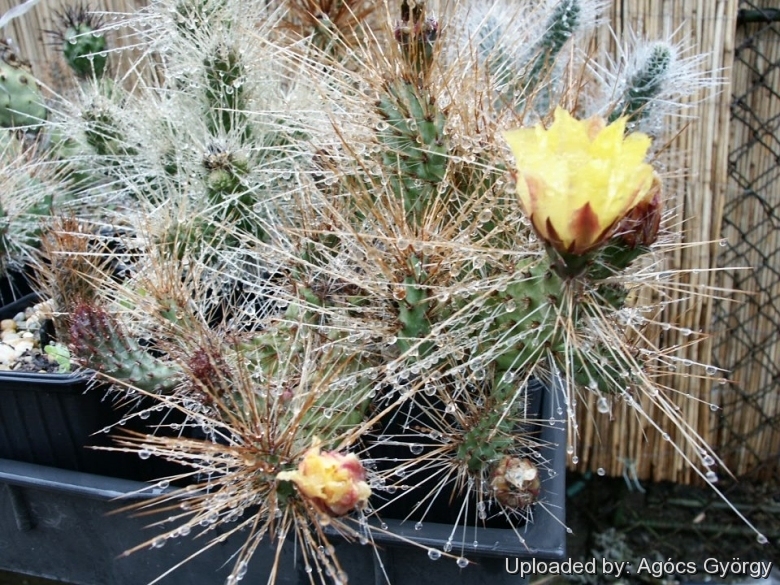




Your support is critical to our success.

Origin and Habitat: Garden origin (selected clone). The natural species is endemic to Argentina, where it occurs in Jujuy, more specifically in Tilcara.
Synonyms:
Description: Tunilla tilcarensisSN|3704]]SN|3704]] cv. Fuchs is a very striking, compact cushion cactus with extremely long spines which are straight, needle-like, fox-brown 6 to 13 cm in length. Beautiful in contrast to the bright yellow flowers that light up like little flames in the tangle.
Subspecies, varieties, forms and cultivars of plants belonging to the Tunilla soehrensii group
- Tunilla soehrensii (Britton & Rose) D.R.Hunt & Iliff: has flattened, semicircular stems 4-6 cm long, covered with long yellowish to brown needle-like spines, Flowers yellow to red. Distribution: Argentina, Bolivia and Chile.
- Tunilla tilcarensis (Backeb.) D.R.Hunt & Iliff: Fruits split either horizontally, or vertically on the umbilicus. Distribution: Argentina, where it occurs in Jujuy, more specifically in Tilcara
 Tunilla tilcarensis cv. Fuchs: is a very compact cushion cactus with fox-brown spines 6 to 13 cm in length. Beautiful in contrast to the bright yellow flowers.
Tunilla tilcarensis cv. Fuchs: is a very compact cushion cactus with fox-brown spines 6 to 13 cm in length. Beautiful in contrast to the bright yellow flowers.
Cultivation and Propagation: Tunilla tilcarensisSN|3704]]SN|3704]] is a low maintenance groundcover plant that tolerate considerable neglect and will naturalize, it is drought-tolerant; and suitable for xeriscaping.
Growing rate: It is relatively fast-growing species; in cultivation with generous irrigation it sprawls to form large low mounds in only a few years. It is suitable for hanging baskets too.
Soils: Easy to cultivate outdoor in dry, sandy or gravely, well-drained soils. May be grown in clay soils as long as drainage is good and soils do not remain wet, it is very adaptable both in acid, neutral and basic (alkaline) soils, but prefers a pH in the range 6 to 7.5.
Repotting: Use pot with good drainage.
Feeding: During the beautiful season it’s good to enrich the soil using a fertilizer rich in potassium and phosphorous, but poor in nitrogen, because this chemical element doesn’t help the development of succulent plants, making them too soft and full of water.
Watering Needs: Outdoors little or no water once established, in the green house irrigate regularly from March to october, keep fairly dry in winter, tolerate dry condition but suffer if exposed to prolonged and severe drought. A position at the base of a south-facing wall or somewhere that can be protected from winter rain is best for this plant, but is however resistant to moisture and rain.
Sun Exposure: Full sun, in semi shaded position wont produce many flowers.
Frost hardiness: They are reasonably cold hardy , tolerating temperatures down to -5° to -15° C (or even less) depending on clone, they are also quite tolerant of winter wet. (In good drained soils)
Heat Tolerance: Excellent.
Pest & diseases: No serious insect or disease problems. Watch for mealy-bugs.
Propagation: Propagated by cuttings of leaf pads at any time in the growing season. (Allow cut surface to callus over before planting).
| Your Actions | |
|---|---|
| Back to Tunilla index | |
| Back to Cactaceae index | |
 |
Back to Cacti Encyclopedia index |
Privacy stantement - Terms and conditions - How to cite - About us - Feedback - Donate




